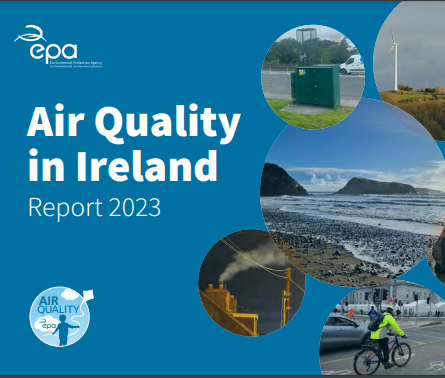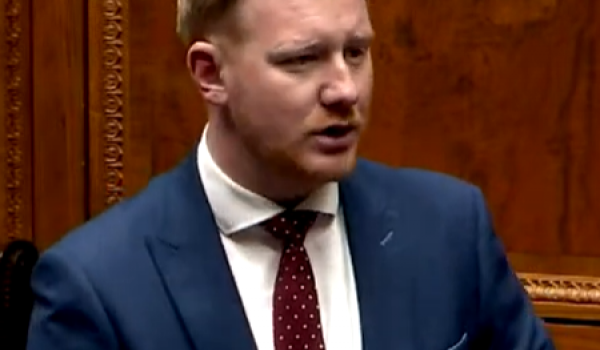
Almost 1,600 are dying early each year because of poor air quality.
The Environmental Protection Agency says Ireland is not on track to reach its air quality target by 2026.
There are 115 air quality monitoring stations in the country, three of them in Donegal.

Fine particulate matter which comes from solid fuels is responsible for the premature deaths, and the EPA says local authorities need to crack down harder on the use of smoky fuel.
Manager at Ambient Air Quality Patrick Kenny says lives depend on it………………..
You can access the latest EPA Air Quality Report HERE
Release in full –
Ireland needs to tackle solid fuel burning and transport emissions to meet Clear Air Strategy ambition and protect public health
- Ireland’s latest monitoring shows air quality is in compliance with current EU standards, but achieving future targets will be very challenging.
- While the overall level of air pollution has reduced over recent decades, our understanding of the level at which air pollutants impact health has also been deepened by the updated guidelines from the World Health Organization (WHO).
- The EPA has expanded Ireland’s air quality monitoring network to include 115 monitoring stations, up from 29 in 2017, and now provides real-time monitoring and forecasting on ie.
- Local authorities need to facilitate proactive choices on both home heating and travel through strong application of the Solid Fuel Regulations and supporting alternatives to car travel.
23rd September 2024: The Environmental Protection Agency (EPA) has today published its annual air quality report Air Quality in Ireland 2023. The report is based on the extensive monitoring network in Ireland, which consists of 115 monitoring stations, reporting hourly, and is a leader across Europe in providing a 3-day air quality forecast. The report shows that Ireland has work to do to meet our Clean Air Strategy targets. In particular, there are concerning localised issues which lead to poor air quality. While the overall level of air pollution has reduced over recent decades, our understanding of the level at which air pollutants impact health has also been deepened by the World Health Organization (WHO), which now advises that there are no safe levels of air pollution.
Ireland met the current EU legal air quality limits in 2023, but monitoring results were higher than the more stringent health-based World Health Organization air quality guidelines for a number of pollutants including: particulate matter (PM), nitrogen dioxide (N02), sulphur dioxide (SO2) and ozone (O3). The main sources of these pollutants are the burning of solid fuel in our towns and villages and traffic in our cities. In our Clean Air Strategy Ireland has committed to achieving the WHO guideline values by 2040, with interim targets for 2026 and 2030. Despite comparing favourably with many of our European neighbours, Ireland’s 2023 monitoring results would exceed the soon-approaching 2026 targets.
In 2023 air monitoring results from EPA stations across Ireland show that fine particulate matter (PM2.5), mainly from burning solid fuel in our homes, and nitrogen dioxide (NO2), chiefly from road traffic, continue to be the main threats to good air quality. High levels of these pollutants are often associated with cold, still weather from late autumn through to early spring, when generally incidents of poor air quality of one to two days duration occur. The report identifies that using less solid fuel and cleaner fuels to heat our homes, making our homes more energy efficient and reducing our use of cars to go to school, work and play are actions that will contribute towards achieving our Clean Air targets. Local authorities can facilitate people to make cleaner and healthier air quality choices by acting on the Solid Fuel Regulations and supporting alternatives to car travel.
Launching the report, Dr Micheál Lehane, Director of the EPA’s Office of Radiation Protection & Environmental Monitoring, said:
“Ireland now has a world class air quality monitoring network so the evidence base is strong in showing us that air pollution is not just a city phenomenon, there are negative impacts in towns and villages right across the country. If we want to achieve our ambition of Clean Air for everyone, everywhere, all year round, then we need to address the emissions from residential heating and invest in transport systems right across the country.”
The report further identifies the critical role for local authorities to facilitate people to make cleaner and healthier air quality choices:
- Target air enforcement activities, including to ensure compliance with the solid fuel regulations.
- Invest in public transport infrastructure across the country.
- Promote active travel – install and maintain safe footpaths and cycle lanes to continue to increase active travel as a viable and safe alternative to car use and associated nitrogen dioxide emissions.
Roni Hawe, EPA Programme Manager, said:
“Progress on residential retrofit programmes will help to reduce fine particulate matter pollution but vigilance is also needed to ensure that only compliant solid fuel, such as low smoke coal and dried wood, is being sold to householders. In 2022 Ireland introduced new laws to reduce the pollutant potential of solid fuels. We need to see a strong inspection campaign by local authorities this winter to make sure all retailers only stock and sell approved solid fuel.”
To find out more about how we can improve air quality read the EPA’s How we can improve the air we breathe infographic or check out the Government of Ireland Let’s Clear the Air campaign which highlights some simple steps we can all make and help reduce pollution from solid fuels.
The Air Quality in Ireland 2023 report is available on the EPA website.
The EPA continually monitors air quality across Ireland and provides the air quality index for health and real-time results online. Results are updated hourly on the website, and people can log on at any time to check whether the current air quality is good, fair or poor.





